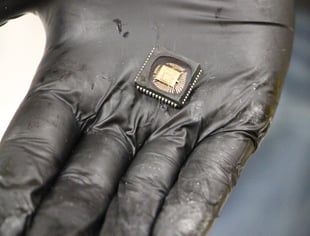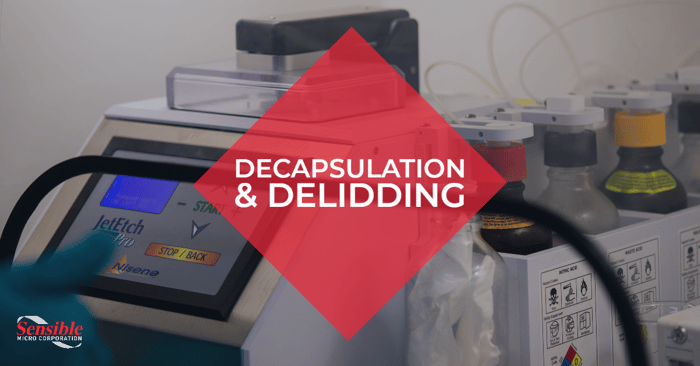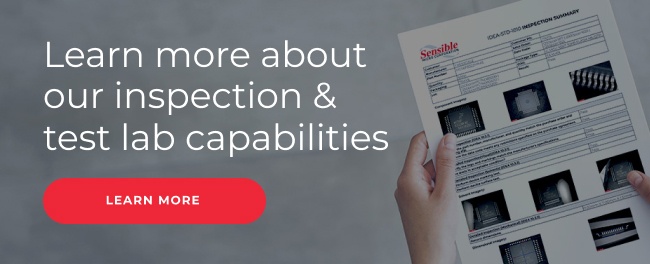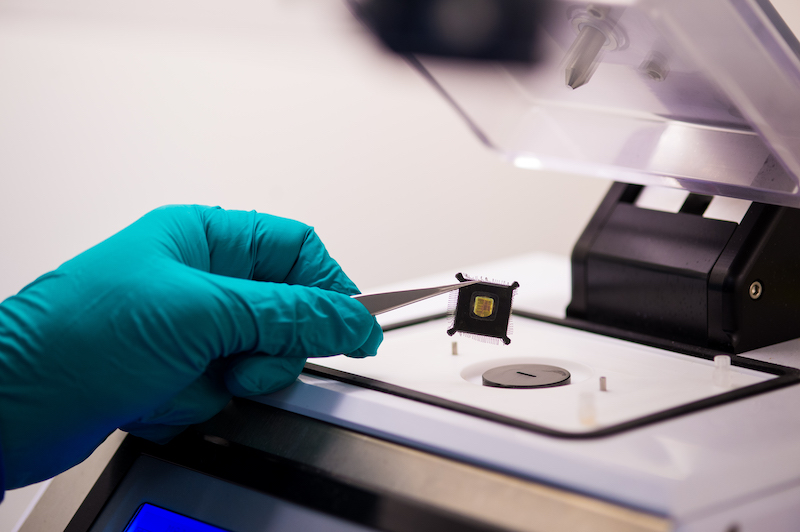When it comes to electronic component testing, decapsulation and delidding are commonly used as part of the process for internal wire bond and die wafer inspection protocols. Both refer to the removal of a cap, lid, or encapsulating material from a packaged integrated circuit (IC) by mechanical, thermal, laser or chemical means.
Though the terms are often used interchangeably, they are technically different analyses. In this post, we cover the differences between the two and their importance in counterfeit electronic component mitigation.
Key Differences
Decapsulation and delidding involve different removal techniques, have their own set of requirements, and are used for different types of components. Even though they serve the same purpose and achieve the same end goal, the key difference between them has to do with the type of process each is.

Decapsulation is most commonly a wet chemical process. When a component is decapped, in this fashion, abrasive acids are used to corrode the surface of a component until the internal die wafer and wafer bonds are revealed. It usually requires the use of a specialized acid-etching machine and is commonly used for devices with plastic packaging.
Delidding, on the other hand, is a mechanical process. It is used to pry or ‘de-lid’ the top of a component and does not require the use of a chemical agent. Since components that are hermetically sealed or have ceramic packaging can not be dissolved by acids or other erosive solvents, the top or lid has to be manually removed from the device in order to expose the internal die.
Counterfeit Mitigation & Electronic Component Testing Capabilities
In most counterfeit mitigation plans, a destructive analysis is required to help confirm the internal die markings, bond integrity and layout is consistent with a golden sample. A destructive analysis is the process of dismantling, testing, and inspecting electronic components to verify the internal design, construction, and materials used. The sample size is dependent on the standard followed, usually between one to three pieces. For instance, AS6081 requires three pieces. Decapsulation and delidding allow for the inner elements of the component to be examined for irregularities or abnormalities. With the help of a high-powered microscope, a part can be visually inspected to verify the following:
- The original component manufacturer (OCM) logo and part series markings are correct
- There are no defects to the wire bonds or die
- If applicable, any typography is correct

While tests and inspections can help identify suspicious parts, sourcing through the right distributor can help rid your supply chain of suspect or counterfeit electronic components. As a certified distributor with in-house lab inspection capabilities, Sensible Micro is able to provide component sourcing and full counterfeit avoidance testing. With our Nisene JetEtch chemical decapsulation machine and other lab equipment, we can perform both decapsulation and delidding analyses on-site. Schedule a call to discuss your testing and sourcing needs with a Sensible Micro representative today.
Stay on top of the latest developments in the industry by subscribing to the Sensible Micro blog today.



















